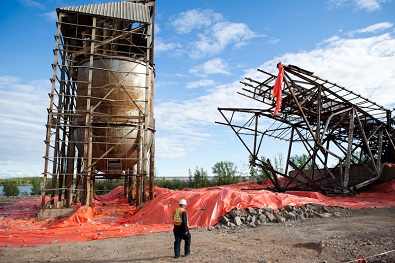During the Cold War, there was a push to expand uranium mining as part of an effort to keep up in the nuclear weapons arms race.
The result is northern Saskatchewan became home to many abandoned or “legacy” mines.
Some of the sites were only exploratory and others were operational uranium projects with underground mines and open pits.
There are 35 legacy mines around the Uranium City area and two north-east of La Ronge.
In 2006, the provincial government hired the Saskatchewan Research Council (SRC) to properly decommission these sites through an initiative called ProjectCLEAN.
As part of the initiative, SRC will ensure the mine sites are being cleaned up to provincial and federal standards.
Proper documentation of the sites is almost non-existent, so in order to safely navigate the area SRC has to rely on limited data.
“We do our best to take old historic maps,” SRC business unit manager for environmental remediation Ian Wilson says. “A lot of times local people have very good insight and knowledge that we use. So, we try to reconstruct what had gone on historically on these old mine sites.”
In order to prioritize the 37 legacy mines, SRC has started with the ones that are closest to communities or the ones with hazards.
Some of the sites have large holes or nuclear radioactive material, so these are the ones that are secured first.
So far, seven sites have been remediated.
There are also approximately 20 sites that are in the assessment phase or are being decommissioned.
“Generally, we want to clean them up to a standard dictated by federal and provincial regulators and make them safe for both the environment and human health,” Wilson says.
He adds SRC wants to get the land back to a point that people can trap, hunt and fish in the nearby areas.
(Gunnar Mine decommissioning process. MBC file photo.)
